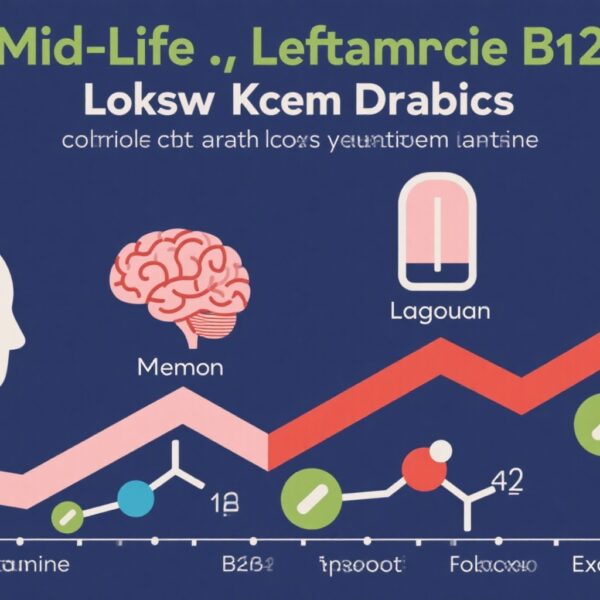Highlight
– A five‑variable clinical model predicted acute kidney injury (AKI) within 48 hours of liver transplantation (LT) with AUCs of 0.760 (development) and 0.759 (validation).
– Predictors in the final model: preoperative hepatic encephalopathy (HE), alcohol‑associated cirrhosis, preoperative albumin‑bilirubin (ALBI) score ≥ −1.78, operation time ≥560 minutes, and intraoperative fresh frozen plasma (FFP) transfusion volume (per 1,000 mL).
– Severe AKI (KDIGO stage 2–3) within 48 hours was independently associated with MELD ≥14, operation time ≥560 minutes, intraoperative blood loss ≥1,000 mL, intraoperative urine output <1,000 mL, and higher lactic acid level.
Background: why early AKI after liver transplant matters
Acute kidney injury is a common and serious complication after liver transplantation. Early postoperative AKI is associated with increased short‑term morbidity (e.g., need for renal replacement therapy, longer ICU and hospital lengths of stay), higher costs, and worse long‑term renal and patient survival. The first 48 hours after LT are a pivotal window: hemodynamic perturbations, blood loss and transfusion, ischemia–reperfusion injury, and exposure to nephrotoxic medications frequently converge in this period to tip patients toward kidney injury.
Despite progress in perioperative management and organ preservation, risk stratification tools that identify patients at highest imminent risk of AKI and enable targeted early interventions remain limited. The study by Wei and colleagues (J Clin Exp Hepatol. 2026) addresses this unmet need by developing and internally validating a pragmatic clinical model to predict AKI occurring within 48 hours of LT using variables readily available before or immediately after surgery.
Study design and methods
This single‑center observational study enrolled 453 adult liver transplant recipients treated at Beijing Tsinghua Changgung Hospital between January 2018 and October 2022. Patients were randomly split into a development cohort and a validation cohort in a 6:4 ratio.
Acute kidney injury was defined according to the 2012 KDIGO criteria. The primary outcome was any AKI within 48 hours post‑LT; secondary analyses focused on severe AKI (KDIGO stage 2–3) within the same time frame. Candidate predictors included a range of preoperative (e.g., etiologic diagnosis, hepatic encephalopathy, nutritional indices, ALBI score, MELD) and intraoperative variables (operation duration, blood loss, transfusions, urine output, lactate).
Predictor selection used univariate screening followed by multivariate logistic regression and backward stepwise selection to derive a parsimonious model. Model performance was evaluated by area under the receiver operating characteristic curve (AUC) for discrimination and calibration plots for agreement between predicted and observed risks. Separate multivariate logistic regression identified independent risk factors for severe AKI.
Key findings
Incidence
At 48 hours following LT, the authors report that 125 patients (46%) developed AKI. (Note: reported counts and percentages are presented as in the original report.)
Predictive model for AKI within 48 hours
From an initial set of 17 variables with univariate association (P < 0.1), a backward stepwise logistic regression produced a five‑variable prediction model including:
- Preoperative hepatic encephalopathy (HE)
- Alcohol‑associated cirrhosis
- Preoperative ALBI score ≥ −1.78
- Operation time ≥560 minutes
- Intraoperative fresh frozen plasma transfusion volume (per 1,000 mL)
Model discrimination was good in both datasets: AUC = 0.760 in the development cohort and AUC = 0.759 in the validation cohort (P < 0.05). Calibration curves demonstrated excellent agreement between predicted probabilities and observed outcomes (calibration P > 0.05), indicating the model’s probability estimates matched observed AKI rates across risk strata.
The practical implication is that a clinician can combine a few common clinical data points to stratify immediate post‑operative AKI risk and consider early preventive steps for those at high risk.
Predictors of severe AKI (KDIGO stages 2–3) within 48 hours
Independent risk factors identified for severe AKI included:
- Preoperative model for end‑stage liver disease (MELD) score ≥14
- Operation time ≥560 minutes
- Intraoperative blood loss ≥1,000 mL
- Intraoperative urine output <1,000 mL
- Elevated lactic acid level
These factors are biologically plausible: extensive blood loss and prolonged surgery reflect hemodynamic instability and longer ischemia times, low urine output signals inadequate renal perfusion, and elevated lactate is a marker of systemic hypoperfusion and metabolic stress.
Clinical interpretation and implications
Strengths of the model include its reliance on readily available clinical variables and validation within a held‑out cohort from the same institution. The model’s discrimination (AUC ≈0.76) places it in the moderate‑to‑good range for clinical risk scores and suggests clinical utility for early triage.
Potential clinical applications:
- Early identification of high‑risk recipients immediately after LT to trigger protocolized interventions (e.g., intensified hemodynamic monitoring, goal‑directed fluid therapy, restrictive transfusion strategies when safe, avoidance or minimization of nephrotoxic agents).
- Prompt nephrology consultation for high‑risk patients, consideration of early renal protective strategies, and lowering thresholds for renal replacement therapy planning when clinically indicated.
- Informing decisions about timing and dosing of calcineurin inhibitors, which are nephrotoxic and often initiated early after LT; a risk score could justify temporary CNI minimization or alternate immunosuppression strategies in selected high‑risk individuals.
The model’s inclusion of ALBI rather than albumin or bilirubin alone is notable: ALBI is an objective liver function score that captures both elements and has increasing use in hepatology settings. That alcohol‑related liver disease and hepatic encephalopathy are independent predictors aligns with known associations between baseline disease severity, systemic inflammation, and renal vulnerability.
Expert commentary: limitations and next steps
Important caveats:
- Single‑center design and internal validation only. External validation in geographically and demographically distinct cohorts (including different transplant practices and donor types) is required before widespread adoption.
- Observational design raises the possibility of residual confounding. Some intraoperative practices (e.g., use of vasoactive drugs, transfusion triggers, graft quality) that influence AKI risk may vary between centers and were not fully described.
- Timing and definitions: the focus on 48‑hour AKI is clinically relevant but excludes later occurring AKI related to sepsis, nephrotoxic drugs, or late graft dysfunction. Validation of the model for different time windows would be informative.
- Missing data and model usability: the study does not detail handling of missing variables or provide a simple bedside calculator or nomogram; for implementation, these tools and decision thresholds are needed.
Future research priorities:
- External validation across multiple centers and healthcare systems, with pre‑specified thresholds for action and assessment of net clinical benefit and cost‑effectiveness.
- Prospective implementation studies that test whether risk‑guided preventive bundles reduce AKI incidence, need for renal replacement therapy, and lengths of stay.
- Refinement of the model by adding early biomarkers of renal stress (e.g., NGAL, TIMP2*IGFBP7) or intraoperative hemodynamic data streams to assess incremental predictive value.
Practical recommendations for clinicians
While awaiting external validation, clinicians can use the study’s findings to inform vigilance and early mitigation strategies for patients with the identified risk features. Practical steps in the first 48 hours might include:
- Frequent assessment of hemodynamics and urine output; early correction of hypotension and anemia.
- Judicious use of FFP and other blood products—use transfusions when indicated and consider balanced transfusion strategies.
- Avoid or minimize exposure to additional nephrotoxins (e.g., non‑steroidal anti‑inflammatories, aminoglycosides), and consider delaying or reducing calcineurin inhibitor exposure in very high‑risk patients when clinically feasible.
- Early involvement of nephrology for patients meeting high‑risk criteria or showing early biochemical or oliguria trends.
Conclusion
Wei et al. present a practical and well‑reported clinical model to predict AKI within 48 hours after liver transplantation using five readily available variables. The model demonstrated consistent discrimination and calibration in internal validation and highlights modifiable intraoperative factors (operation time, transfusions, blood loss, urine output) that may be targeted for AKI prevention. External validation and prospective trials testing risk‑guided interventions are the logical next steps to move from prediction to improved outcomes.
Funding and clinicaltrials.gov
The original article did not report an industry sponsor or a clinicaltrials.gov registration number in the information provided here. Readers should consult the full manuscript for details on funding and trial registration.
References
1. Wei Y, Qi Z, Wu W, Feng C, Yang B, Yin H, Zhang C, Gao X, Wu H, Sun S, Zhang W, Zhang H. Early Prediction of Acute Kidney Injury Following Liver Transplantation: Development and Validation of a Clinical Risk Model. J Clin Exp Hepatol. 2026 Jan‑Feb;16(1):103179. doi: 10.1016/j.jceh.2025.103179. Epub 2025 Aug 29. PMID: 41048885; PMCID: PMC12493209.
2. KDIGO AKI Work Group. KDIGO Clinical Practice Guideline for Acute Kidney Injury. Kidney Int Suppl. 2012;2(1):1–138.
Readers seeking additional context on perioperative AKI after liver transplantation may consult contemporary reviews on mechanisms and management in transplant and nephrology literature.



